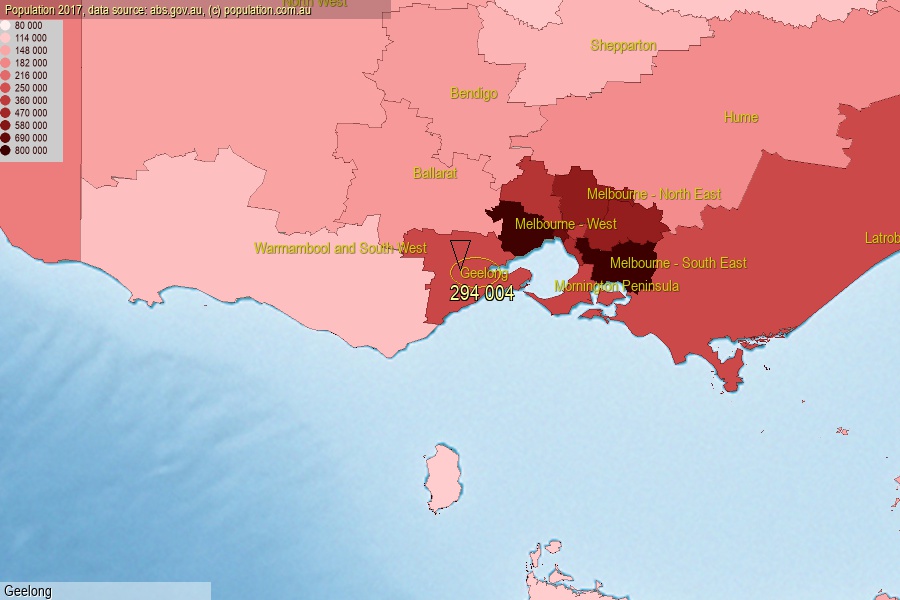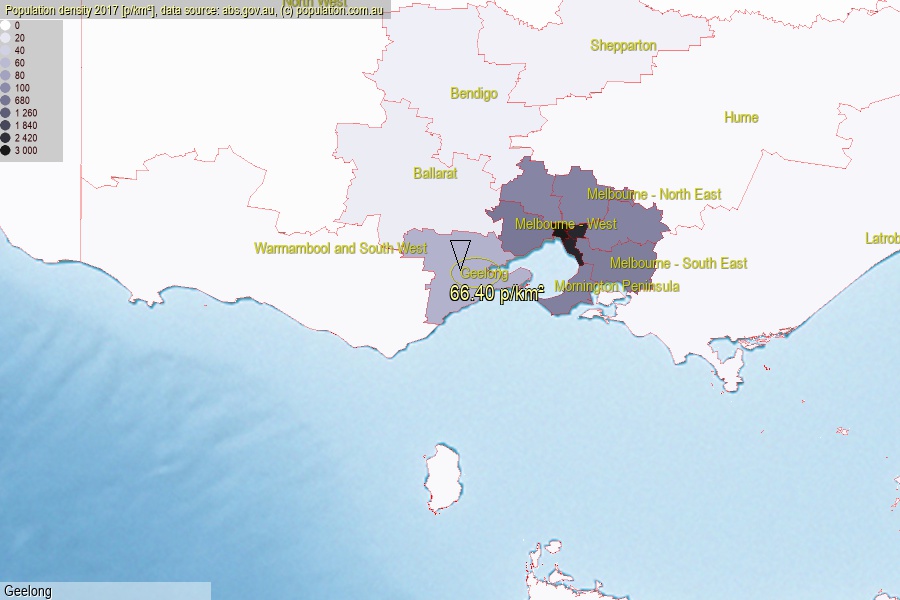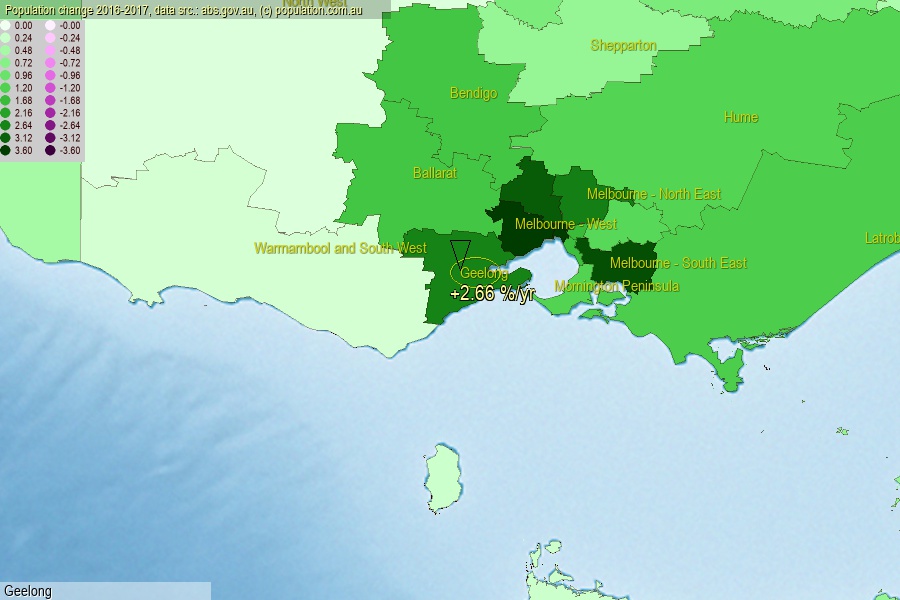 population.com.au
population.com.auLast official estimated population of Geelong (as Statistical Area Level 4) was 294 004 people (on 2017-06-30)[2]. This was 1.19% of total Australian population and 4.572% of VIC population. Area of Geelong is 4 428.00 km², in this year population density was 66.40 p/km² . If population growth rate would be same as in period 2016-2017 (+2.66%/yr), Geelong population in 2025 would be 362 735. [0]



Click to enlarge. Geelong is located in the center of the images.
Population [people], population density [p./km²] and population change [%/year] [2]
View borders » (new window) [4]
[1991-1992] +1.03 %/Y
[1992-1993] +0.29 %/Y
[1993-1994] +0.19 %/Y
[1994-1995] +0.47 %/Y
[1995-1996] +0.54 %/Y
[1996-1997] +0.28 %/Y
[1997-1998] +0.68 %/Y
[1998-1999] +1.28 %/Y
[1999-2000] +1.48 %/Y
[2000-2001] +1.45 %/Y
[2001-2002] +1.69 %/Y
[2002-2003] +1.22 %/Y
[2003-2004] +0.94 %/Y
[2004-2005] +0.92 %/Y
[2005-2006] +0.97 %/Y
[2006-2007] +1.44 %/Y
[2007-2008] +1.65 %/Y
[2008-2009] +1.77 %/Y
[2009-2010] +1.76 %/Y
[2010-2011] +1.78 %/Y
[2011-2012] +1.82 %/Y
[2012-2013] +2.10 %/Y
[2013-2014] +2.04 %/Y
[2014-2015] +2.31 %/Y
[2015-2016] +2.85 %/Y
[2016-2017] +2.66 %/Y
[0] Calculated with linear interpolation from officially estimated population
[1] Read more about SA4 and Australian Statistical Geography Standard (ASGS) on abs.gov.au
[2] Population data from Australian Bureau of Statistics (Population and density: 2017; change: 2016-2017)
[3] Digital Boundaries: Australian Statistical Geography Standard (ASGS) 2016.
[4] Border coordinates are simplifyed using Ramer-Douglas-Peucker algorithm.